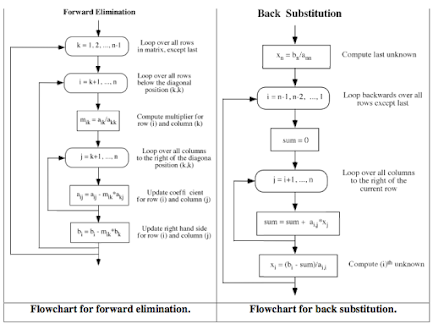SOLUTION OF POLYNOMIAL EQUATIONS
1.BISECTION METHOD:ALGORITHM, FLOWCHART AND EXPLANATION
Bisection method is used to find the real roots of a nonlinear equation. The process is based on the ‘Intermediate Value Theorem‘. According to the theorem “If a function f(x)=0 is continuous in an interval (a,b), such that f(a) and f(b) are of opposite nature or opposite signs, then there exists at least one or an odd number of roots between a and b.”
In this post, the algorithm and flowchart for bisection method has been presented along with its salient features.
Bisection method is a closed bracket method and requires two initial guesses. It is the simplest method with slow but steady rate of convergence. It never fails! The overall accuracy obtained is very good, so it is more reliable in comparison to the Regula-Falsi method or the Newton-Raphson method.
Features of Bisection Method:
- Type – closed bracket
- No. of initial guesses – 2
- Convergence – linear
- Rate of convergence – slow but steady
- Accuracy – good
- Programming effort – easy
- Approach – middle point
Bisection Method Algorithm:
- Start
- Read x1, x2, e
*Here x1 and x2 are initial guesses
e is the absolute error i.e. the desired degree of accuracy* - Compute: f1 = f(x1) and f2 = f(x2)
- If (f1*f2) > 0, then display initial guesses are wrong and goto (11).
Otherwise continue. - x = (x1 + x2)/2
- If ( [ (x1 – x2)/x ] < e ), then display x and goto (11).
* Here [ ] refers to the modulus sign. * - Else, f = f(x)
- If ((f*f1) > 0), then x1 = x and f1 = f.
- Else, x2 = x and f2 = f.
- Goto (5).
*Now the loop continues with new values.* - Stop



Comments
Post a Comment